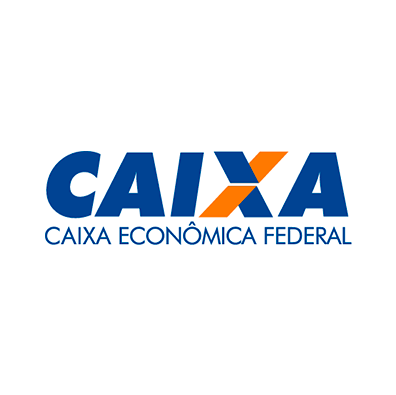In today’s world, every bit of savings counts, especially when it comes to monthly household expenses. From groceries to utilities, these costs can quickly add up, stretching budgets and making financial planning difficult. But there’s a smart, often overlooked tool that can help lighten the load: credit cards tailored with benefits for household expenses.
In this guide, we’ll explore the best ways to leverage credit cards for household spending, helping you save more and get the most out of your monthly budget. From maximizing cashback on groceries to using rewards for utility bills, these strategies can make a significant impact on your finances without requiring drastic lifestyle changes.
How credit card rewards can help you save on essential expenses

Many credit cards offer reward programs specifically designed to help you save on everyday essentials. These programs go beyond basic cashback, giving users tailored rewards that align with household spending categories. When used strategically, these rewards can add up significantly over time, helping you save money on necessary purchases.
The benefits of using credit cards with specific household rewards lie in their ability to align with your monthly spending patterns. For example, a card with high cashback on groceries could mean the difference between a small or substantial savings each month, especially if you have a large family or do frequent grocery shopping.
Similarly, other cards provide rewards on home goods, utilities, and even streaming services—essential items for most households in today’s digital age. Using credit cards that offer these targeted rewards allows you to funnel a portion of your spending back into your household budget, leaving you with more room for other expenses or savings.
Leveraging cashback for groceries and household goods
One of the biggest areas of household spending is on groceries and essentials. Several credit cards offer cashback or points on purchases at grocery stores, supermarkets, and even online shopping platforms. Cashback on these cards generally ranges between 1% and 6%, depending on the card and the category.
By using a credit card with high cashback rates on grocery purchases, you can offset a portion of your monthly food expenses, effectively stretching your budget further without altering your shopping habits. Grocery credit cards work well for people who spend a large portion of their monthly income on food and household supplies.
Many banks and credit card issuers provide cashback rates that increase based on your spending tier, which means that the more you spend, the more you save. Some cards even come with introductory offers, allowing you to maximize savings in the first few months of card ownership. For instance, a credit card that offers 5% cashback on groceries could help you save $20 or more each month if you spend $400 on groceries.
Additionally, certain cards also include benefits for purchases of household goods at major retailers or wholesalers. These perks are helpful for families who buy in bulk or need frequent supplies for their home. Ultimately, choosing a credit card with grocery cashback can significantly benefit your household budget, especially when paired with regular or bulk purchasing habits.
Choosing the right card for utility bill savings
Utility bills like electricity, water, and gas are inevitable expenses, but some credit cards offer perks specifically for these payments. Many cards partner with utility companies or have broad cashback programs that include utility payments in their reward structure. For example, some cards offer up to 5% cashback on recurring bills, which can make a significant difference over the course of a year.
By using a credit card for utility payments, you can also simplify your bill management process. Many cards allow for recurring billing, meaning you won’t have to worry about missing a payment or facing late fees. At the same time, these payments contribute to your reward balance, letting you earn back a percentage of what you spend on essential services.
When selecting a credit card for this purpose, consider cards that offer a flat rate on all purchases or those specifically tailored to cover utilities and recurring expenses. Some cards even provide additional bonuses during certain periods, such as winter or summer, when utility bills tend to spike due to heating or cooling needs. Leveraging a credit card for these expenses can turn what is usually a standard cost into an opportunity to save more each month.
Optimizing rewards on streaming services and subscriptions
In the digital age, streaming services, internet, and various subscriptions have become a part of monthly household expenses. From Netflix and Spotify to cloud storage and internet plans, these costs can add up. Fortunately, several credit cards have evolved to meet this modern need, offering cashback or points for subscriptions and streaming services, making it easier to save on these monthly fees.
Cashback and rewards on entertainment subscriptions
A growing number of credit cards provide cashback on entertainment subscriptions, which can include streaming services like Netflix, Hulu, and Spotify. These cards typically offer a specific percentage cashback, often around 3% to 5%, on monthly subscriptions.
While the individual savings may seem small, over a year, these can amount to a substantial reduction in overall costs for those who rely heavily on streaming and subscription services. Moreover, many credit card issuers partner with popular entertainment providers, offering additional perks like free months of service or bonus points for signing up.
For households that subscribe to multiple services, these credit card benefits make it easy to enjoy the content you love while cutting down on monthly expenses. To get the most out of these benefits, ensure that you link your streaming accounts to a credit card that maximizes these specific cashback rewards.
Managing multiple subscriptions for optimal rewards
For households with various subscriptions—such as streaming, cloud storage, or meal-kit services—it’s crucial to manage these expenses strategically. Some credit cards also offer rewards for annual payments, so if you’re able to pay for these services annually instead of monthly, you may unlock additional savings.
Moreover, certain credit cards allow you to “stack” rewards, where the card offers bonuses on top of other promotions available directly through the service provider. A good approach is to list all your monthly and annual subscriptions, calculate their total cost, and align them with the card that gives you the highest percentage back.
By managing these subscriptions with a rewards-based credit card, you can gain extra cashback or points on purchases you’re already making, enhancing your savings without sacrificing your preferred services.





